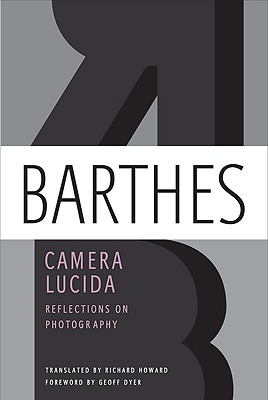
In his Camera Lucida, Roland Barthes introduces the notions of studium and punctum to help us think about photographs. While far from the last word on photography in this post-structuralist postmodern world of ours, and (as Geoff Dyer cautions in his forward) while far from the last word even in Barthes’ own thinking, nevertheless the studium/punctum delimiters together form a useful point of departure when examining a contemporary photograph and asking: is this worth my attention?
What is studium?
Barthes’ description is opaque and I don’t claim to fully grasp it. He writes: “[I]t has the extension of field” which “always refers to a classical body of information….” He goes on:
Thousands of photographs consist of this field, and in these photographs I can, of course, take a kind of general interest, one that is even stirred sometimes, but in regard to them my emotion requires the rational intermediary of an ethical and political culture. What I feel about these photographs derives from an average affect, almost from a certain training.
At the risk of oversimplification, studium is what lies in the background; it is our assumptions, the visual equivalent of our Sitz im Leben. Barthes later refines his description by writing of the unary photograph i.e. a photograph which is all studium and no punctum:
The unary Photograph has every reason to be banal, “unity” of composition being the first rule of vulgar (and notably, of academic) rhetoric: “The subject,” says one handbook for amateur photographers, “must be simple, free of useless accessories; this is called the Search for Unity.”
News photographs are very often unary (the unary photograph is not necessarily tranquil). In these images, no punctum: a certain shock — the literal can traumatize — but no disturbance; the photograph can “shout,” not wound.
What is punctum?
According to Barthes, punctum is the quality which breaks (or punctuates the studium. One might think of it as the black dot which disrupts the white page. It is the detail which reveals the givenness of the studium. It reminds us that the field is contingent. This points us to one of the virtues of a photograph: its subversive quality. “Ultimately,” he writes, “Photography is subversive not when it frightens, repels, or even stigmatizes, but when it is pensive, when it thinks.”
Barthes offers illustrations. Pornography is studium; punctum disrupts the sexual field to produce eroticism. Literalism is studium; punctum disrupts the unary photograph to produce multivalent readings.
Every day, my twitter feed is filled with images from the studium. @500px posts images of mountains reflected in clear lakes and sunsets that light the sky on fire. I respond with “Wow!” and (since I’m a photographer) “I wish I’d taken that.” As the image below attests, I try to achieve the same effect. But in the end, such shots are landscape pornography.

I don’t know what counts as punctum in a landscape photograph. Maybe a lagoon scene where the water source is a culvert. It subverts our travel-brochure expectations for a lagoon by hinting at the possibility that the water takes its colour, not from glacial runoff, but from chemical waste.

It occurs to me that there is another way to account for the studium/punctum delimiters. Here, I draw on Milan Kundera’s novel, The Unbearable Lightness of Being. One of the characters, Sabina, is an artist who, near the novel’s end, finds her aesthetic sensibilities at war with an oppressive and pervasive kitsch. Kundera goes to great lengths to qualify the nature of kitsch. Kitsch is the categorical denial of shit. “[K]itsch is a folding screen set up to curtain off death.” We have this description of its effect:
The feeling induced by kitsch must be a kind the multitudes can share. Kitsch may not, therefore, depend on an unusual situation; it must derive from the basic images people have engraved in their memories: the ungrateful daughter, the neglected father, children running on the grass, the motherland betrayed, first love.
Kitsch causes two tears to flow in quick succession. The first tear says: How nice to see children running on the grass!
The second tear says: How nice to be moved, together with all mankind, by children running on the grass!
It is the second tear that makes kitsch kitsch.
In other words, kitsch is studium. Punctum is the element of a photograph that forces us to acknowledge the existence of shit, or (since shit is probably used as a metaphor) the inevitability of death.
Quite a testimony. Reading it, I realized that a lot of the poetry I hear read at readings and which I find so boring is kitsch. Rather than denying the banal it celebrates it. I guess this is post-modernism: everything is nothing — an not in the Buddhist sense! Sharon Goodier